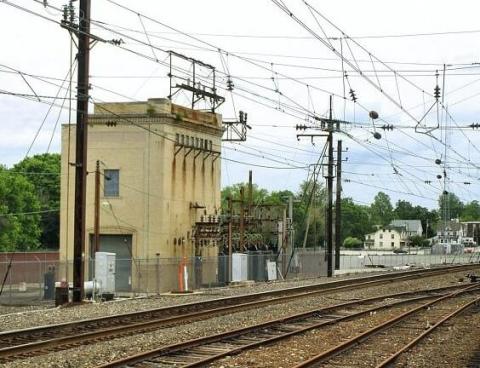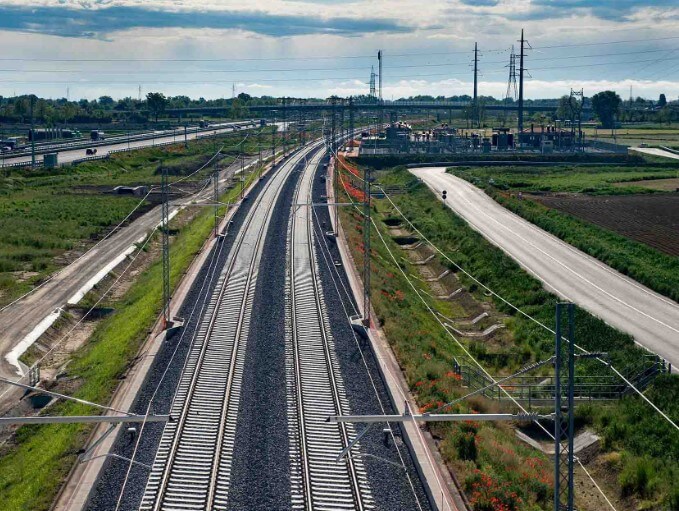
Railway systems are the backbone of modern transportation, enabling efficient movement of people and goods across vast distances. Central to the operation of these systems is the often-overlooked Traction Power Substation (TPSS). This article, inspired by insights from Swartz Engineering, delves into the critical role of the Traction Power Substation in ensuring the seamless operation of electric railways.
What is a Traction Power Substation?
A Traction Power Substation is a specialized facility that converts electrical power from the utility grid into a form that can be used to power electric trains. The TPSS performs several key functions:
1. Voltage Conversion: Transforming high-voltage electricity from the grid to a lower voltage suitable for the railway system.
2. Frequency Conversion: Adapting the frequency of the electric power if necessary, to match the requirements of the railway network.
3. Rectification: Converting alternating current (AC) to direct current (DC) for systems that require DC traction power.
Key Components of a Traction Power Substation
A typical TPSS includes several critical components, each playing a unique role in the conversion and distribution of power:
1. Transformers: These are essential for voltage conversion. They step down the high-voltage electricity from the utility grid to a level suitable for the railway’s traction power system.
2. Rectifiers: For systems requiring DC power, rectifiers convert the stepped-down AC voltage to DC. Modern TPSSs often use solid-state rectifiers for improved efficiency and reliability.
3. Switchgear: This includes circuit breakers and switches that protect and control the power flow within the substation. Switchgear isolates faults and facilitates maintenance without disrupting the entire power supply.
4. Control Systems: These systems monitor and manage the substation’s operation, ensuring optimal performance and safety. Advanced TPSSs integrate smart control technologies for real-time monitoring and remote operation.
5. Cooling Systems: High-power electrical components generate significant heat. Cooling systems, whether air-cooled or liquid-cooled, are essential to maintain safe operating temperatures.
6. Protection Systems: These safeguard the substation and connected railway infrastructure from electrical faults and surges. They include overcurrent relays, ground fault detectors, and surge protectors.
The Role of Traction Power Substations in Railway Systems
Ensuring Reliable and Efficient Power Supply
The primary function of a Traction Power Substation is to provide a reliable and efficient power supply to the railway system. Electric trains rely on a continuous and stable power source to operate. Any interruption or fluctuation in power can lead to delays, operational issues, or even safety hazards.
TPSSs are strategically located along the railway network to ensure consistent power delivery. The positioning of these substations is meticulously planned to optimize the power distribution and minimize losses, ensuring trains have the necessary energy to maintain schedules and operational efficiency.
Supporting the Electrification of Railways
As the world moves towards greener and more sustainable transportation solutions, the electrification of railways is becoming increasingly important. Electrified rail systems are cleaner and more energy-efficient compared to their diesel-powered counterparts. Traction Power Substations are at the heart of this transformation, enabling the shift to electric traction by providing the necessary infrastructure to power electric trains.
Electrified railways reduce greenhouse gas emissions, decrease reliance on fossil fuels, and lower operational costs in the long run. TPSSs, therefore, play a pivotal role in the transition to a more sustainable and environmentally friendly railway system.

GET IN TOUCH
The ultimate solution for reliable power control! call us at 276-285-3841
Enhancing Safety and Performance
Safety is paramount in railway operations. Traction Power Substations contribute significantly to the safety of electric railways. By maintaining a stable power supply and incorporating advanced protection systems, TPSSs help prevent electrical faults that could lead to accidents or service disruptions.
Additionally, modern TPSSs are equipped with sophisticated monitoring and control systems that enhance the performance and reliability of the railway network. These systems allow for real-time tracking of power flow, quick detection of issues, and rapid response to potential problems, thereby ensuring smooth and safe railway operations.
Advances in Traction Power Substation Technology
With technological advancements, Traction Power Substations have evolved significantly, incorporating cutting-edge innovations to improve efficiency, reliability, and performance.
Solid-State Transformers
Traditional transformers are bulky and require significant maintenance. The advent of solid-state transformers (SSTs) has revolutionized TPSS technology. SSTs are smaller, more efficient, and offer greater flexibility in power conversion. They can handle a wide range of input and output voltages and frequencies, making them ideal for modern railway systems that may require different power standards.
Smart Grid Integration
The integration of Traction Power Substations into smart grid systems is another significant advancement. Smart grids use digital technology to monitor and manage power distribution more effectively. By connecting TPSSs to the smart grid, railway operators can optimize energy use, reduce costs, and enhance the reliability of the power supply. Smart TPSSs can also predict and respond to demand fluctuations, further improving efficiency.
Renewable Energy Integration
As railways seek to become more sustainable, the integration of renewable energy sources with Traction Power Substations is gaining traction. TPSSs can be designed to incorporate solar panels, wind turbines, or other renewable energy sources, providing a greener power supply to the railway network. This integration not only reduces carbon emissions but also helps in lowering energy costs and enhancing energy security.
Challenges and Solutions in TPSS Implementation
Despite their critical role and the advancements in technology, implementing and maintaining Traction Power Substations come with several challenges. However, there are solutions to these challenges that can ensure the effective operation of TPSSs.
High Initial Investment
The construction and installation of Traction Power Substations require significant capital investment. The cost includes not only the physical infrastructure but also the advanced technologies needed for efficient operation.
Solution: Governments and railway companies can look into public-private partnerships (PPPs) and other financing models to spread the cost. Additionally, considering the long-term benefits and operational cost savings of TPSSs, the initial investment is often justified. Strategic planning and phased implementation can also help manage the financial burden.
Maintenance and Reliability
TPSSs are complex systems that require regular maintenance to ensure reliability. The failure of a substation can disrupt the entire railway network.
Solution: Investing in high-quality, durable components and incorporating redundancy into the system design can mitigate the risk of failures. Modern TPSSs also utilize predictive maintenance technologies that anticipate issues before they lead to system failures, thereby reducing downtime and maintenance costs.
Integration with Existing Infrastructure
Integrating new TPSSs with existing railway infrastructure, especially in older networks, can be challenging. Compatibility issues may arise, requiring significant modifications.
Solution: Detailed planning and the use of adaptable, modular components can ease the integration process. Upgrading existing infrastructure to support new TPSS technology might also be necessary. Collaboration between engineers, designers, and operators is crucial to ensure seamless integration.

GET IN TOUCH
The ultimate solution for reliable power control! call us at 276-285-3841
The Future of Traction Power Substations
The future of Traction Power Substations is bright, with ongoing advancements promising to further enhance their role in railway systems. Key trends shaping the future include:
Digitalization and Automation
The digital transformation of railway systems is set to revolutionize the operation of TPSSs. Automation and advanced analytics will enable more efficient and precise control of power distribution. Digital twins, which create virtual models of physical systems, can be used to simulate and optimize the performance of TPSSs, leading to improved efficiency and reduced operational costs.
Energy Storage Solutions
Integrating energy storage solutions such as batteries or supercapacitors with TPSSs can provide additional flexibility and reliability. These storage systems can store excess power during low demand periods and release it during peak times, ensuring a stable and continuous power supply. This integration is especially beneficial for accommodating renewable energy sources, which can be intermittent.
Green TPSS Design
Sustainability is becoming a core focus in the design and operation of TPSSs. Future substations will likely incorporate more environmentally friendly materials, energy-efficient components, and renewable energy sources. Green design practices not only reduce the environmental impact but also align with broader societal goals of sustainability and carbon neutrality.
Conclusion
The Traction Power Substation is a vital component of modern railway systems, playing a crucial role in ensuring reliable, efficient, and safe train operations. As the world moves towards more sustainable and technologically advanced transportation solutions, the importance of TPSSs will continue to grow.
Swartz Engineering's dedication to innovation and sustainability makes them a key player in the future of Traction Power Substations. By embracing new technologies and green practices, they are not only enhancing the performance of railway systems but also contributing to a more sustainable and efficient future for transportation.
In a world where the demand for efficient and sustainable transport is ever-increasing, the Traction Power Substation stands as a cornerstone
Our Expert Services
Swartz Engineering provides top-quality products to meet our customers' needs. We also make sure our products work reliably and safely. Our products include:
- Type 76 DC Relay
- Type 82 DC Relay
- Swartz Engineering’s Type 64 Ground Relay
- Type 32 Reverse Current Relay
- Type 150 DC
- CSM Shield Monitor
- Metal Oxide Surge Arrestors
- Transducers
- MVIS SL Slim-line Contactor
- Fully-tested Power Control Rooms
- Swartz Engineering’s Portable Substations
